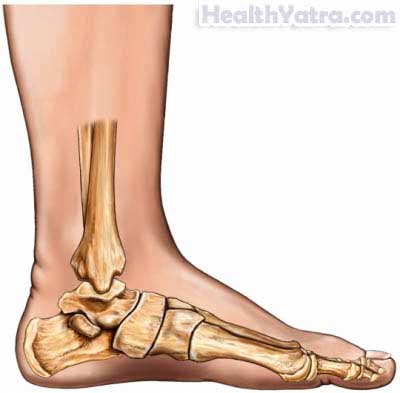Definition
Feet usually have an arch on the inside portion of the foot. A flat foot is a foot that has lost or never developed this arch.
Most flat feet are flexible. This type does not cause problems and does not require treatment. Rigid flat feet can cause problems and are best treated.

Causes
Infants and young children naturally have flat feet. The arch should develop over time. Sometimes, the arch does not develop. It is not always clear why this happens. It may be associated with
- Conditions present at birth, such as excess laxity of joint capsules and ligaments
- Family history
Flat feet may develop because of:
- Ruptured or damaged ankle tendon that supports the arch
- Foot injury
- Medical conditions that affect muscle innervation, such as peripheral neuropathy or diabetes
- Degenerative changes in certain joints
- Ligament damage in the foot
Risk Factors
Factors that increase your chance of flat feet include:
- Family history
- Foot injuries
- Conditions of the feet that can injure foot tissue such as osteoarthritis
- Diseases that cause muscle or nerve damage, such as diabetes, cerebral palsy,spina bifida, or muscular dystrophy
Symptoms
Flat feet may not cause any symptoms at all. Rigid flat feet may cause:
- Pain
- Calluses, blisters, or skin redness on the innerside of the foot
- A stiff foot
- Weakness or numbness of the foot
- Rapid wearing out of shoes—worn shoes lean in toward each other
- Difficulty or pain with activities like running—may indicate that the foot is having trouble doing its job
Diagnosis
Your doctor will ask about your symptoms and medical history. A physical and foot exam will be done. Flat feet can be diagnosed by appearance. To determine if the foot is rigid, you may be asked to do some simple tasks.
Treatment
If the flat foot is rigid and causing problems, you will be referred to a foot specialist. Talk with your doctor about the best treatment plan for you. Options include the following:
Physical Therapy, Exercises, and Orthotics
Physical therapy may relieve discomfort. You may be given a specific stretching and strength program. You may also have treatment to help manage the discomfort.
Exercises can help with the strength of the surrounding muscles. It may relieve some of the pressure in the foot.
Orthotics and Support
Orthotics are shoe inserts that support the foot. These inserts may help to reduce pain and disability. In mild cases, a well-fitting pair of shoes with arch support may be all that is needed.
Flat feet caused by nerve or muscle disease may need special braces.
Surgery
Feet that do not respond to the treatments above may need surgery. The surgery will help to create a supportive arch.
Prevention
Well-fitted shoes with good arch support may help prevent flat feet. Maintaining a healthy weight may also lower wear and tear on the arches.
